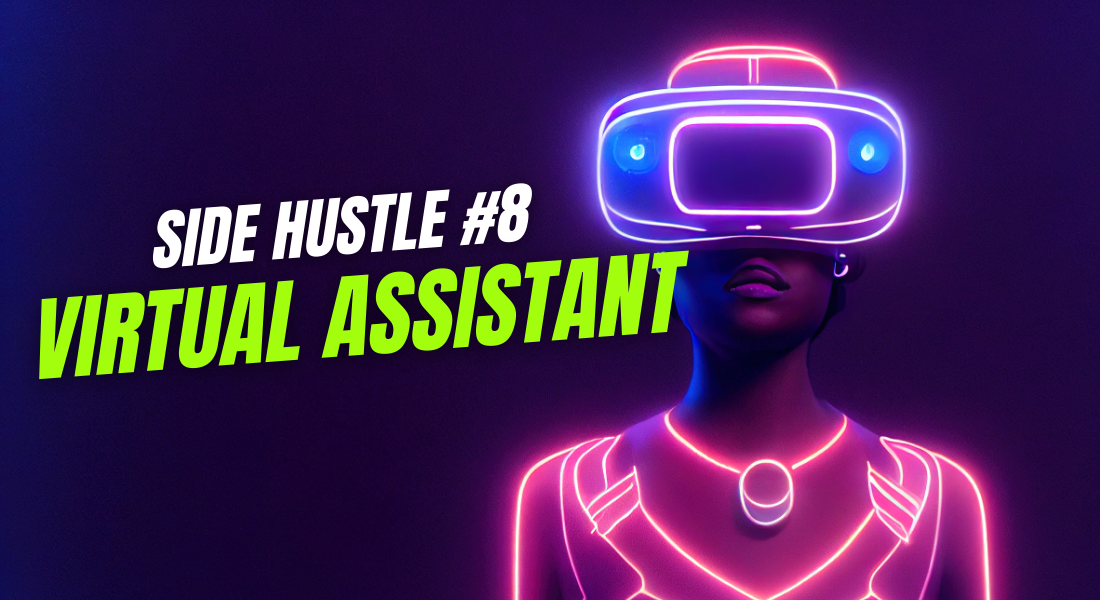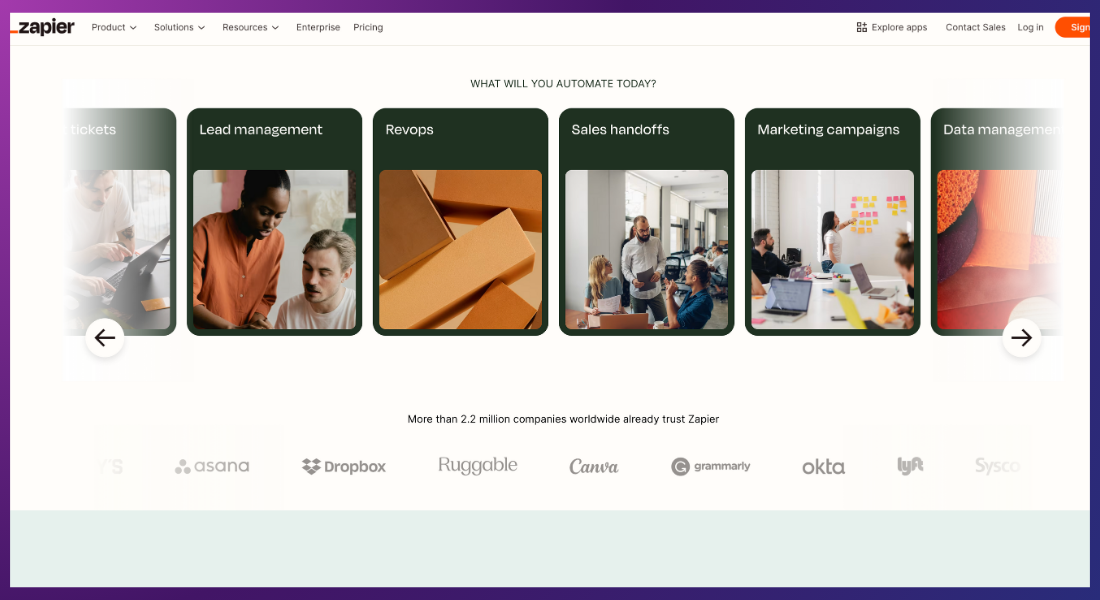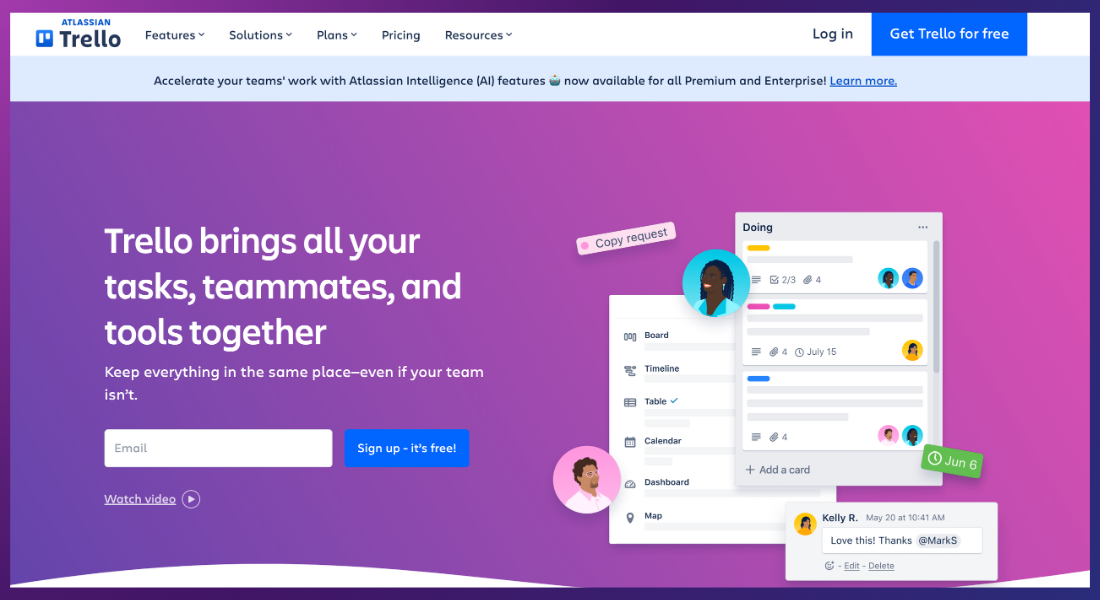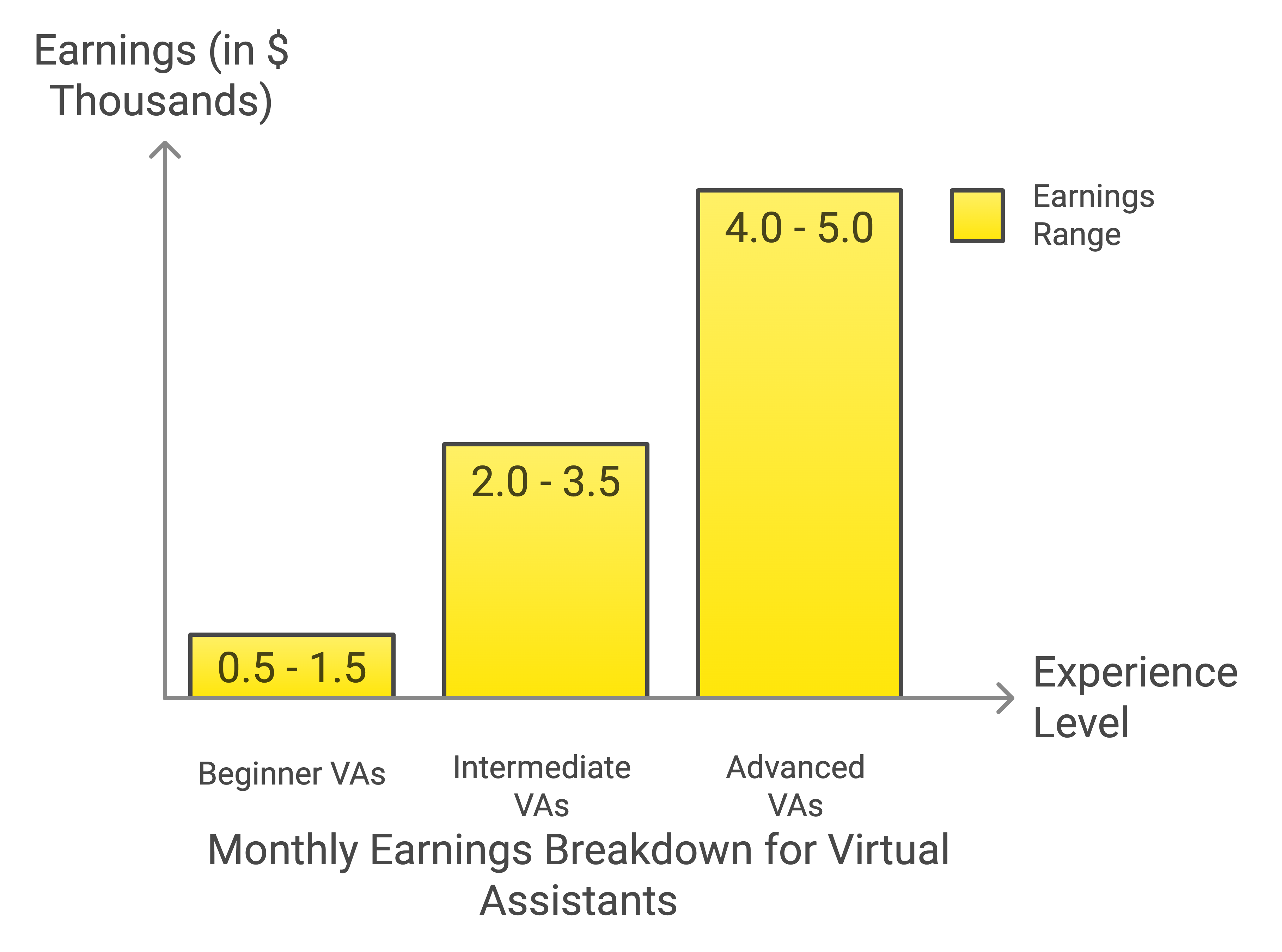👩💻 Side Hustle #8: Virtual Assistant Services
Published on October 10, 2024 Share

- Why Start a Virtual Assistant Side Hustle?
- Who Needs Virtual Assistant Services?
- How to Generate Leads for Your Virtual Assistant Services
- 1. Start with Your Personal and Professional Networks
- How to Fulfill Virtual Assistant Services
- Best AI Tools for Virtual Assistant Services
- How Much Can a Virtual Assistant Earn?
- Conclusion
The digital age has unlocked countless side hustle opportunities, and becoming a Virtual Assistant (VA) is one of the most flexible and lucrative options. You can work remotely as a VA and earn between $500 and $5,000 monthly if you enjoy multitasking, organizing, and assisting others.
Now, let’s dive into how Virtual Assistant services work, who needs them, how to find clients, and the best tools to streamline your VA tasks.
Why Start a Virtual Assistant Side Hustle?
The global market for virtual assistants is rising. In fact, it was valued at over $1.5 billion in 2019, with an expected growth rate of 34.4% between 2020 and 2026, according to Global Market Insights.
Benefits of Virtual Assistant Services:
- Flexibility: Choose your clients, set your own hours, and work from anywhere.
- Variety: Offer a wide range of services, from email management to social media handling.
- Scalable earnings: Start small, then scale your income as you gain experience and more clients.
Whether you’re looking to make extra income or build a full-time business, being a VA offers endless opportunities to grow.
Who Needs Virtual Assistant Services?
Virtual assistants can serve a variety of clients. From small business owners to busy professionals, here’s a closer look at who might need your services:
1. Entrepreneurs & Small Business Owners
Entrepreneurs often juggle many tasks, making it hard for them to manage day-to-day operations. As a VA, you can help with tasks like scheduling, answering emails, or even managing their website.
- Example: A small business owner hired a VA to manage their inbox and schedule appointments. With the VA’s help, the entrepreneur could focus on scaling their business, resulting in a 30% increase in productivity.
- Pro Tip: If you specialize in helping small businesses, offering services like website updates, CRM management, or bookkeeping can make you an invaluable asset.
2. Busy Professionals
Corporate executives, doctors, lawyers, and other busy professionals often require help managing their schedules, emails, and administrative tasks. As a VA, you can step in to handle these responsibilities and keep their day running smoothly.
- Example: A VA helped a lawyer organize client appointments and emails, reducing their daily workload by 20%. This allowed the lawyer to focus on important casework, ultimately improving their efficiency.
3. Bloggers & Influencers
Many content creators, such as bloggers and influencers, need assistance with tasks like social media management, content scheduling, and responding to followers or brands. Your skills can help them focus on creating content while you manage their administrative needs.
- Pro Tip: By specializing in social media management or content marketing for bloggers, you can target a niche market and offer tailored services such as managing Instagram posts, YouTube video uploads, or email newsletters.
How to Generate Leads for Your Virtual Assistant Services
Once you understand who your potential clients are, the next step is attracting them. Generating leads is essential for building a successful VA side hustle. Below are some effective strategies to find and attract clients:
1. Start with Your Personal and Professional Networks
Your first clients may come from your network. Reach out to friends, former colleagues, or acquaintances who might need a VA. Don’t hesitate to ask for referrals—word of mouth can be a powerful tool.
- Example: A VA landed their first client by reaching out to a former coworker who needed help managing their growing e-commerce business. The referral led to ongoing work and additional client recommendations.
2. Build a Presence on Social Media Platforms
Platforms like LinkedIn, Instagram, and Facebook are great for promoting your services. Regularly post about the work you do and engage with potential clients in relevant industry groups.
- Pro Tip: Use LinkedIn to connect with business owners who might need VA services. Personalize your connection requests with a brief pitch about how you can help them streamline their operations.
3. Use Freelancing Platforms
Freelance marketplaces such as Upwork, Fiverr, and Freelancer are perfect for finding clients who need VA services. Set up a profile, highlight your skills, and start applying for jobs.
- Pro Tip: Make sure your profile includes client reviews and specific examples of the services you offer to increase your chances of being hired.
4. Join Virtual Assistant Agencies
If you’re new to the VA world, joining an agency can be a quick way to match your skills with clients who need assistance. Agencies often handle marketing and client sourcing, allowing you to focus on delivering quality work.
- Pro Tip: Make sure the VA agency you join is in line with your skills and focus. Certain businesses, like real estate, legal services, or social media management, are the emphasis of some agencies. This will increase the possibility that you will draw clients that value your special combination of skills and knowledge.
5. Cold Outreach
Cold emailing potential clients can also work wonders. Research businesses or professionals who could benefit from a VA, and send a personalized email explaining how your services can help them.
- Pro Tip: Make sure to add an attention-grabbing subject line in your cold outreach, and personalize your email by mentioning any particular pain issues the client could be experiencing. Offering a free consultation or trial period can also increase your chances of getting a positive response. Keep the email short, focused, and always follow up politely after a few days if you haven’t heard back.
How to Fulfill Virtual Assistant Services
Now that you’ve landed clients, it’s crucial to deliver high-quality service. Here’s a step-by-step guide on how to efficiently fulfill your role:
Step 1: Understand the Client's Needs
Start with a clear understanding of your client’s expectations. What tasks do they need help with? What are their goals? Having a thorough onboarding process helps you align with their needs.
- Example: A VA working with an online coaching business begins by having an in-depth conversation with the client to understand their needs. The client explains that they need help managing their email inbox, scheduling client meetings, and organizing weekly newsletters. The VA asks clarifying questions to ensure they fully understand the client's workflow and preferences.
Step 2: Task Prioritization
Managing multiple tasks requires careful planning. To guarantee that everything is completed on time, rank the jobs according to importance and deadlines.
- Example: After onboarding, the VA reviews the client's weekly tasks, such as replying to emails, booking client calls, and preparing the weekly newsletter. With deadlines approaching for the newsletter, the VA prioritizes this task, ensuring it's completed first. Less urgent tasks, like organizing the client’s files, are scheduled for later in the week.
Pro Tip: Use project management tools like Asana or Trello to organize and track tasks, ensuring nothing slips through the cracks.
Step 3: Perform the Tasks
Complete the assigned tasks following the client’s guidelines. Whether it’s managing emails, scheduling appointments, or handling social media, pay attention to detail and follow instructions carefully.
- Example: The VA then executes the prioritized tasks. They draft the weekly newsletter using the client’s preferred template, schedule it for delivery through a tool like Mailchimp, and respond to emails based on the client’s provided guidelines. Each task is handled with attention to detail, ensuring everything follows the client’s tone and instructions.
Step 4: Maintain Regular Communication
Keep your clients informed about the progress of tasks. Regular updates help build trust and prevent any miscommunications. Use communication tools like Slack to streamline discussions.
- Example: Throughout the week, the VA sends the client a brief update on task progress, informing them that the newsletter is scheduled and email responses are on track. The VA uses Slack for quick updates and Trello to track progress, making communication seamless and transparent.
- Pro Tip: Weekly or bi-weekly check-ins with clients can ensure you’re staying on track and allow for early course corrections if needed.
Step 5: Seek Feedback & Revisions
After completing a task, always ask for feedback. This not only helps improve your service but also shows that you value the client’s input. Be open to revisions and ensure the final result meets their expectations.
- Example: After completing the weekly newsletter and managing the client's inbox, the VA asks the client for feedback on the completed tasks. The client requests a minor adjustment to the tone of the newsletter to better align with their brand voice. The VA promptly makes the changes and resends the updated version for approval. The client is satisfied, and the VA notes this feedback for future newsletters, ensuring that their service continually meets the client’s expectations.
Best AI Tools for Virtual Assistant Services
Leveraging AI tools can greatly enhance your efficiency as a virtual assistant, helping you manage tasks, streamline workflows, and collaborate seamlessly with clients. Below are some of the best AI tools for virtual assistants:
1. Asana
- Key Feature: Asana is a powerful project management tool that helps organize tasks, set deadlines, and track progress. Its collaborative features allow for easy communication with clients, making it perfect for managing multiple projects simultaneously.
- Free Version: Available with basic features, which are more than enough for managing small to medium tasks and projects.

2. Google Workspace
- Key Feature: Google Workspace offers an integrated suite of cloud-based productivity tools, including Gmail, Google Drive, Google Docs, and Google Calendar. It’s ideal for handling emails, managing documents, and scheduling appointments, ensuring seamless organization.
- Free Version: Limited free access with premium plans starting at $6/month, offering enhanced storage and collaboration features.
3. Hootsuite
- Key Feature: Hootsuite is a feature-rich software for social media account management that lets you plan and keep an eye on posts on many social media networks from one location. It's a great option for VAs handling social media management for clients.
- Free Version: Available with limited features, such as basic post scheduling for up to 2 social profiles.

4. Zapier
- Key Feature: Zapier allows you to automate workflows by connecting apps and automating tasks between them, saving time on repetitive work. For example, you can automate sending emails when a new task is added to Asana or save attachments from Gmail to Google Drive automatically.
- Free Version: Offers a free plan for basic automation, with premium features starting at $19.99/month for more advanced integrations.

5. Trello
- Key Feature: Trello is a highly visual task management tool that uses boards, lists, and cards to help you organize tasks and workflows. It’s excellent for tracking both small and large projects with clients, and its simplicity makes it easy to use for both you and your clients.
- Free Version: Free plan available with basic functionality, while premium plans (starting at $5/month) offer additional features like advanced checklists and team boards.

Pro Tip: Combining these tools can create a powerful productivity system. For example, use Asana for task management, Google Workspace for communication, Hootsuite for social media management, and Zapier to automate routine workflows.
How Much Can a Virtual Assistant Earn?
Your earnings as a VA depend on your skills, experience, and the clients you attract. Here’s a general breakdown:
- Beginner VAs: Expect to earn between $500 - $1,500 per month, offering basic services like email management or scheduling.
- Intermediate VAs: With more experience and specialized skills, you can make $2,000 - $3,500 per month.
- Advanced VAs: Highly skilled VAs who handle complex tasks or work with high-profile clients can earn $4,000 - $5,000 per month.

Conclusion
Virtual Assistant services are a fantastic side hustle that offers flexibility, variety, and strong earning potential. By delivering excellent service, using AI tools to streamline tasks, and marketing yourself effectively, you can build a successful VA business that grows over time.
Ready to get started? Begin by leveraging your network, building an online presence, and promoting your services on platforms like Upwork and LinkedIn. With persistence and dedication, you’ll soon be on your way to earning $500 to $5,000 per month as a Virtual Assistant.
Ready to start your own side hustle using AI? Check out these opportunities:
- Explore AI-Powered Voiceover Services to use AI tools for voiceover projects.
- Unleash your creativity with AI-Powered Graphic Design and create stunning visuals effortlessly.
- Manage and grow online presence through AI-Powered Social Media Management with AI-driven insights.
- Boost website visibility using AI-Powered SEO Optimization and climb the search rankings faster.
Take your side hustle to the next level with the power of AI!


